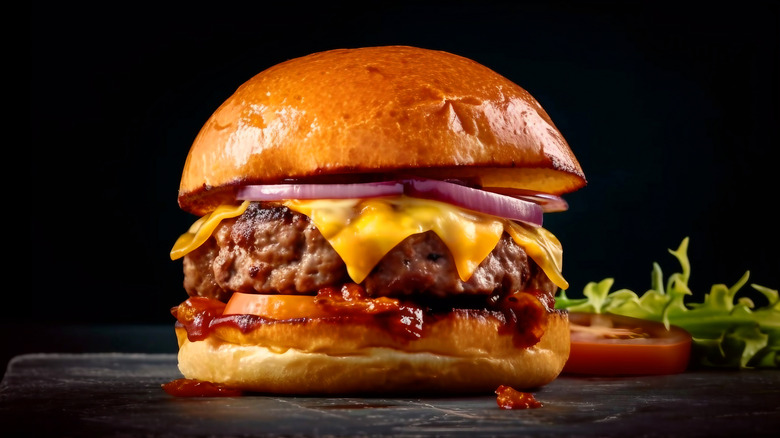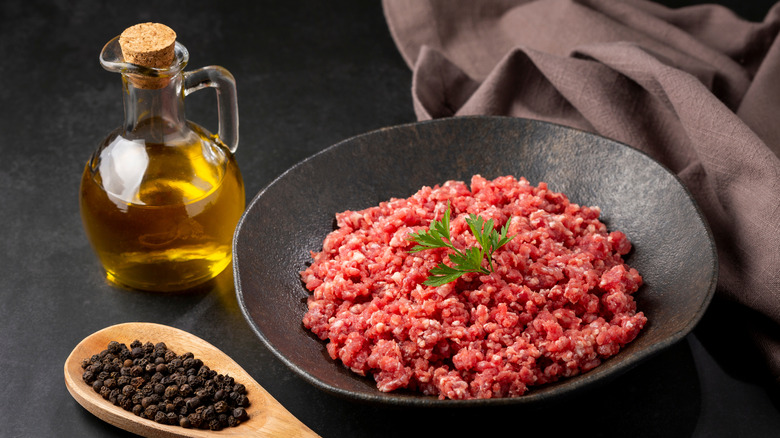The One Mistake To Avoid With A Bison Burger
Few animals are as celebrated in North America as the bison. At one point, an estimated 30 to 60 million of these majestic animals roamed the land, but European settlers brought a wholesale slaughter that less than 1,000 bison survived. Today, careful stewardship has brought the bison back, and they are once again a uniquely nutritious alternative to longtime staples of beef, chicken, and pork.
While bison is a red meat, you'll still need to keep a few things in mind if you're swapping out your usual beef burger for a bison cheeseburger. Yes, it's going to taste a little different: It's described as having a pleasant sweetness, and the iron content gives it a slightly mineral — but not gamey — taste. A bison burger won't have that greasy taste and texture that can come with a beef burger, and because it's a much leaner meat, you shouldn't make the mistake of cooking it exactly as you'd cook a beef burger.
Prepping bison burgers means seasoning them to your taste, but there's one more key step here that you shouldn't skip. Along with your herbs and spices, you'll need to add a bit of fat to your bison burger. Without it, these lean patties will end up dry, and no one wants a dry burger. Fortunately, this isn't a complicated step, and there are a number of things that you might add to make sure your bison burgers come out juicy and delicious every time.
Adjust your burger recipe for lean bison burgers
When you're making something like beef burgers or meatloaf, you probably reach for the ground beef that's labeled 80/20. The fat content is important — along with making the burger nice and juicy, it provides an incredible mouthfeel. Although exact numbers vary, bison meat typically has around half the fat content that beef does, which means you'll have to help it along to get that juiciness.
When you're seasoning and mixing your ground meat for bison burgers, there are a few things you can add. A dash of olive oil or butter will add fat and texture, and you can also add this by opting to pan-fry instead of grilling. Add some butter to the pan, and your burgers will be deliciously browned on the outside and juicy on the inside. It's the same idea that's at play in the Midwest's butter burger, which is precisely what it sounds like.
There are a few other things you should keep in mind when you're mixing and cooking. Don't over-mix, and don't pack your burgers tightly. That can end up making them tough. Following that, don't smash the burgers. That will press out some of the fat and moisture that you need to keep them juicy. Trust us when we say that a little patience will go a long way.

